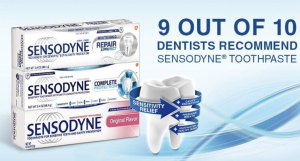How to Make a Website That Converts
A website that converts is the ultimate goal for any online presence. You’ve invested time and resources into creating a stunning website that you’re proud of, but now it’s time to ensure it delivers results.
A visually appealing site is a great start, but the real magic happens when those visitors become loyal customers. So, how can you make that happen?
Many businesses fall into the trap of focusing solely on their website’s appearance and lose sight of the crucial role that Conversion Rate Optimization (CRO) plays.
But don’t worry—you’re not alone, and we’re here to help. We’ve gathered insights on what makes high-converting websites stand out and succeed. Keep reading to discover the strategies that turn visitors into customers.
But before diving into what makes a website that converts, here is a little food for thought:
- Research indicates that the average human attention span is just 8.25 seconds, underscoring the preference for short, easily digestible content.
- When viewers engage with video content, their attention span increases significantly to around 120 seconds, making videos a powerful tool for capturing and maintaining visitor interest and turning brief visits into deeper engagement with your website.
- According to KissMetrics, 40% of people abandon a website that takes more than 3 seconds to load. Alarming, right? This shows the importance of having a website that loads fast.

Ready to dive in? Let’s explore the proven strategies behind high-converting websites and discover how you can apply these insights to create a website that not only attracts visitors but turns them into loyal customers.
10 Proven Strategies to Boost Your Website’s Conversion Rate
1. Leverage Your Unique Value Proposition to Drive Conversions
A well-crafted Unique Value Proposition (UVP) is essential for making a website that converts. It’s the key to communicating not just what you offer but the transformative benefits your customers will experience.
In other words, people don’t buy products—they buy the results those products help them achieve.

To ensure your UVP is effective in driving conversions, it should answer these critical questions:
- What sets you apart from the competition?
- What specific problems do you solve for your customers?
- What unique solutions or value do you provide?
- How will it benefit your customers and help them achieve their goals?
For instance, instead of merely describing features, emphasize how your product or service impacts lives—whether it’s a project management tool that saves time and boosts efficiency or a gym that offers a pathway to a healthier lifestyle.
To maximize your website’s conversion potential, your UVP should be:
- Clear: Free of jargon and easy to grasp.
- Concise: Direct and to the point, without unnecessary complexity.
- Compelling: Focusing on the real benefits and value your customers will gain.
- Consistent: Visible throughout your website and aligned with all your marketing efforts.
By entering your UVP around the outcomes your customers care about, you’ll create a website that attracts visitors and converts them. The goal is to have a website that turns users into loyal customers, significantly boosting your conversion rates.
2. Understand Your Audience to Drive Conversions
One of the most critical elements of creating a website that converts is deeply understanding your audience. Knowing who your visitors are, what they want, and what challenges they face allows you to tailor your website’s content, design, and functionality to meet their specific needs. This personalized approach is key to building trust, engaging users, and ultimately driving conversions.

Why It Matters
- Targeted Content: When you understand your audience’s needs, you can create content that resonates with them, addressing their pain points and providing solutions that speak directly to them.
- User Experience: An in-depth knowledge of your audience’s behavior allows you to design a user experience that is intuitive and easy to navigate, leading to higher satisfaction and more conversions.
- Effective CTAs: Understanding what motivates your audience helps you craft compelling calls-to-action that encourage them to take the next step, whether that’s making a purchase, signing up for a newsletter, or contacting you for more information.
How to Do It
- Conduct Audience Research: Use tools like surveys, analytics, and social media insights to gather data about your audience’s demographics, preferences, and behaviors.
- Create Buyer Personas: Develop detailed profiles of your ideal customers to guide your content creation and design decisions. Here’s a free tool from HubSpot to create your buyer persona.
- Test and Refine: Continuously test different approaches and gather feedback to ensure your website aligns with your audience’s needs and expectations.
By understanding your audience, you can create a website that attracts visitors and converts them into loyal customers, driving your business forward.
3. Tailor Your CTAs for Maximum Impact
Personalized Calls-to-Action (CTAs) can be a powerful tool for boosting conversions on your website. By using customer data and analytics to tailor CTAs based on each visitor’s behavior, preferences, or characteristics, you create a sense of relevance that encourages users to take action. According to HubSpot, businesses that use personalized CTAs experience a 202% increase in conversions compared to those using generic CTAs.
To personalize your CTAs effectively, it’s crucial to understand where your users are in their buyer journey and craft messages that resonate with their current needs and interests. This approach is vital to transforming your site into a website that converts at a higher rate:
- Nurture Leads: Use targeted CTAs that address specific pain points, guiding visitors toward solutions that matter most to them.
- Encourage Conversions: Personalized offers and messaging help users see the value in taking the next step, whether it’s making a purchase or signing up for a service.
- Build Trust and Loyalty: A tailored experience makes users feel understood and valued, which fosters long-term relationships and loyalty.
For e-commerce sites
Amazon is a prime example of how personalized CTAs can drive conversions. Amazon uses algorithms and data analytics to suggest products based on your browsing history, purchase history, and other behaviors. Examples include:
- Frequently Bought Together: Suggests additional items that complement the products in your cart, encouraging users to buy more.
- Recommended for You: Provides personalized product recommendations based on previous interactions, leading to more sales.
- Complete Your Look: In the fashion segment, Amazon suggests items that complement what you’ve already purchased, enhancing the shopping experience.
- Limited Time Offer: Sends tailored emails with time-sensitive discounts and promotions to drive urgency and sales.
For non-e-commerce websites
Personalized CTAs can be just as effective. Consider a service-based business or a content-driven site:
- Service-Based Business: If a visitor is exploring a particular service page, a CTA offering a free consultation specific to that service can be far more compelling than a generic “Contact Us” button.
- Content-Driven Site: For a blog or educational website, personalized CTAs might suggest related articles or invite the reader to subscribe to a newsletter based on the topics they’ve shown interest in.
By tailoring your CTAs to the individual user, you not only increase engagement but also enhance the overall user experience, leading to higher conversion rates and greater customer satisfaction.
4. Optimize Your Website for Mobile Users
With more than half of all web traffic coming from mobile devices, optimizing your website for mobile users is no longer optional—it’s essential if you truly want a website that’s not only pretty but also converts. A mobile-optimized website ensures that your visitors have a seamless experience, regardless of the device they’re using, which is critical for conversions. Here’s how you can optimize your website for mobile and why it matters:
Responsive Design
A responsive website design automatically adjusts to fit the screen size of the device it’s being viewed on. This ensures that your website looks great and functions well on smartphones, tablets, and desktops alike. Responsive design isn’t just about resizing content; it’s about rethinking the layout to prioritize the user experience on smaller screens.
For example:
- Simplify Navigation: Mobile users should be able to navigate your site easily with one hand. This might mean using a hamburger menu, larger touch targets, and streamlined content.
- Prioritize Content: Place the most important information at the top of the page, where users can access it without scrolling.
- Optimize Images and Media: Ensure that images and videos load quickly and don’t consume excessive mobile data.
Fast Loading Speeds
Mobile users are often on the go and have little patience for slow-loading websites. In fact, a 1-second delay in mobile load times can reduce conversions by up to 20%. Google’s research shows that 53% of mobile users will leave a site if it takes longer than 3 seconds to load.
To improve loading speeds:
- Compress Images: Use tools to reduce image file sizes without sacrificing quality.
- Minimize Code: Remove unnecessary code, scripts, and plugins that slow down your site.
- Leverage Browser Caching: Store static resources locally on users’ devices to speed up subsequent visits.
Mobile-Friendly Forms
If your website includes forms, such as contact forms or checkout pages, they need to be mobile-friendly. Long or complex forms can frustrate mobile users, leading to higher abandonment rates.
Click-to-Call Buttons
For service-based businesses, a click-to-call button is a must-have. Mobile users often want to contact a business directly without having to navigate through multiple pages. By incorporating click-to-call buttons, you make it easy for users to reach you instantly, improving the likelihood of conversion.
Test Across Devices
Finally, it’s crucial to test your website on multiple devices and browsers to ensure a consistent experience. Use tools like Google’s Mobile-Friendly Test to identify any issues and see how your website performs on various devices.
5. Keep Your Forms Short and Sweet
Nobody likes filling out long, complicated forms. Picture this: You find a website you like, everything looks great, and you’re ready to sign up or buy something. But then, a huge form pops up, asking for tons of details. It’s frustrating, and you might just give up.
To avoid this, make sure your forms are short and only ask for the information you really need. You can always get more details later if necessary. Here are some simple tips to make sure your forms don’t scare people away:
- Keep It Simple: Only include the essential fields in your form.
- Ask for Just the Basics: Don’t ask for more information than you need at that moment.
- Use Clear Labels: Make it easy for users to understand what you’re asking for.
- Make It Mobile-Friendly: Ensure your form is easy to fill out on a phone—no one likes zooming in and out.
- Enable Autofill: Let users fill in their details faster by using saved information.
The goal of your forms is to make it easy for customers to sign up or make a purchase. Don’t put them off with long, unnecessary forms. Keep it simple, and you’ll keep your customers happy and more likely to come back.
6. Create Targeted Landing Pages for Ad Campaigns
When running ad campaigns, sending users directly to your homepage might seem like the easiest option, but it’s not the most effective strategy for conversions. Instead, creating specific landing pages tailored to the ad’s message is crucial for maximizing your results. Here’s why:
Focused User Experience
Landing pages are designed to be highly focused, offering a single, clear call to action (CTA) that aligns with the ad that brought the user there. Unlike a homepage, which might have multiple links, menus, and distractions, a well-crafted landing page keeps the visitor’s attention on one main objective, whether that’s signing up for a newsletter, downloading an eBook, or making a purchase. This focused approach significantly increases the chances of conversion.
For example, if you’re running an ad campaign promoting a specific product or service, the landing page on a website that converts should provide detailed information about that product or service, along with a clear CTA like “Buy Now” or “Learn More.” By eliminating unnecessary options, you guide the user toward the desired action without overwhelming them with choices.
Better Ad Relevance and Quality Scores
Platforms like Google Ads and Facebook Ads reward relevance. When the landing page closely matches the ad content, your campaign is likely to achieve higher relevance scores, leading to better ad placements and lower costs per click. A dedicated landing page that reflects the ad’s messaging, visuals, and offer helps ensure that users find exactly what they expected when they clicked on your ad, making them more likely to convert.
Enhanced Tracking and Analytics
With dedicated landing pages, you can more accurately track the performance of your ad campaigns. You’ll be able to see how many visitors completed the desired action and where they might have dropped off. This data is invaluable for optimizing future campaigns, allowing you to tweak your landing pages for even better performance.
Improved User Satisfaction
When users click on an ad, they expect to find information directly related to what they clicked on. Sending them to a generic homepage forces them to search for the content that interests them, which can lead to frustration and a higher bounce rate. A specific landing page on a website that converts delivers exactly what the user is looking for, making their experience smoother and more satisfying.
Higher Conversion Rates
All these factors contribute to a higher conversion rate. A well-constructed landing page that directly answers the user’s query and provides a clear path to the next step will outperform a homepage almost every time. By reducing distractions and focusing on the user’s intent, you create a streamlined process that naturally leads to more conversions.
In Summary, creating specific landing pages is a must for your ad campaigns to be truly effective. A website that converts not only attracts visitors but also turns them into customers by providing a clear, streamlined path to the desired action. Having a targeted landing page offers a focused user experience, improves ad relevance, enhances tracking, boosts user satisfaction, and ultimately leads to higher conversion rates. By aligning your landing pages with the goals of your ad campaigns, you’ll see better results and a greater return on your investment.
7. Optimize Your Website’s Loading Speed
Website loading speed is critical for conversions because users have little patience for slow websites. If your site takes too long to load, visitors are likely to leave before they even see your content, leading to higher bounce rates and lost opportunities. Additionally, Google uses page speed as a ranking factor, meaning slow sites may rank lower in search results, further reducing traffic and potential conversions.
How to Improve It
- Use Modern Image Formats: Convert your images to AVIF or WEBP formats, which offer better compression without losing quality. Tools like the “Converter for Media” plugin in WordPress can automate this process.
- Leverage Caching: Implement browser caching and server-side caching to reduce load times for returning visitors.
- Minimize Unnecessary Code: Clean up your HTML, CSS, and JavaScript to ensure your site loads quickly by reducing file sizes and requests.
- Choose a Reliable Hosting Provider: Opt for a hosting service that offers fast server response times, and consider using a Content Delivery Network (CDN) to speed up content delivery globally.
By focusing on these key areas, you can ensure your website loads quickly, providing a better user experience and improving your chances of converting visitors into customers.
8. Implement Trust Signals to Build Credibility and Boost Conversions
One of the most overlooked yet highly effective elements in increasing your website’s conversion rate is the implementation of trust signals.
Trust signals are elements on your website that reassure visitors of your credibility, reliability, and the safety of engaging with your business. When potential customers feel confident about your brand, they are far more likely to take the desired action, whether it’s making a purchase, signing up for a service, or contacting you for more information.
Here’s how to effectively implement trust signals on your website:
Display Customer Testimonials and Reviews
Customer testimonials and reviews are powerful tools that can greatly influence the decision-making process of your visitors. Displaying positive feedback from satisfied customers provides social proof that others have had a good experience with your product or service, which can alleviate any doubts or hesitations.
- How to Do It: Integrate customer testimonials prominently on your homepage, landing pages, and product pages. Use star ratings, customer quotes, and even video testimonials to add authenticity. Make sure to regularly update these testimonials to reflect your most recent customer experiences.
Showcase Security Badges and Certifications
Security is a major concern for online users, especially when it comes to providing personal information or making purchases. Displaying security badges from recognized authorities like Norton, McAfee, or SSL certificates can significantly increase your visitors’ trust in your website.
- How to Do It: Place security badges near the checkout button, sign-up forms, and any area where sensitive information is required. Ensure that your SSL certificate is active and visible in the browser’s address bar (with a padlock icon), signaling that the connection is secure.
Include Trustworthy Payment Methods
Offering well-known and secure payment methods can also boost trust. Visitors feel more secure when they see familiar payment options, as they associate them with safe transactions.
- How to Do It: Clearly display accepted payment methods like Visa, MasterCard, PayPal, and other trusted options on your checkout page (if it applies to your type of business, of course). Consider offering additional secure payment methods like Apple Pay or Google Pay for mobile users.
Quick tip: If you run an e-commerce site and don’t offer Apple Pay, you’re likely missing out on a significant number of sales!
Highlight Industry Awards and Recognitions

If your business has received industry awards, certifications, or any form of recognition, showcasing these on your website can further enhance credibility. Awards indicate that your business is a leader in its field and has been acknowledged by reputable organizations.
- How to Do It: Place award badges, certification logos, or mentions of recognitions in strategic locations on your website, such as the homepage, about page, or in a dedicated “Awards” section.
Provide Clear and Transparent Contact Information
Imagine walking into a store, finding the perfect t-shirt, and then being told you have to go up four floors just to pay. Frustrating, right? The same goes for online shopping—if your customers can‘t easily find how to reach you, they might abandon their purchase altogether.
A business that openly shares its contact information, such as a phone number and email, signals that it’s legitimate and easily reachable. This transparency builds trust and reassures visitors that they can contact you if they have any questions or issues.
- How to Do It: Include a dedicated “Contact Us” page with your business address, phone number, and a contact form. Consider adding live chat support for immediate assistance. Also, display your contact information in the website footer for easy access. This is key for a website that converts.
9. Offer a Strong Guarantee or Return Policy
For e-commerce businesses: A clear and strong return policy or satisfaction guarantee can significantly reduce the perceived risk for potential customers. When shoppers know they can get their money back if they’re not satisfied with their purchase, they’re more likely to complete the transaction. This assurance can be the deciding factor that turns a hesitant visitor into a buyer.
How to Do It for E-commerce
- Display Your Return Policy: Make sure the return policy is clearly outlined on your product pages, during the checkout process, and in the website footer.
- Keep It Simple: Ensure that the terms are easy to understand and free of confusing jargon. For example, “30-day no-questions-asked returns” is straightforward and reassuring.
- Highlight the Guarantee: If you offer a satisfaction guarantee, prominently feature it on your website to build customer confidence.
For Non-E-commerce Websites: A strong guarantee can also apply to service-based businesses or non-e-commerce websites. Instead of a return policy, this might take the form of a satisfaction guarantee or a commitment to deliver specific results.
How to Do It for Non-E-commerce
- Service Guarantees: For example, a consulting firm might offer a “Satisfaction Guaranteed” promise, where clients are assured they won’t be billed unless they’re completely satisfied with the service.
- Clear Terms: Just like with e-commerce, make sure any guarantees are easy to understand and prominently displayed on relevant pages, such as the services page or in the contract terms.
- Highlight Success Rates: If applicable, mention your track record or success rates alongside the guarantee to further reassure potential clients.
By offering a strong guarantee, whether it’s a return policy for products or a satisfaction promise for services, you can remove barriers to conversion and build greater trust with your audience.
10. Showcase Your Portfolio and Case Studies
For service-based businesses, showcasing your portfolio or case studies can be a powerful trust signal. These elements demonstrate your expertise and the results you’ve achieved for other clients.
- How to Do It: Create a dedicated portfolio or case studies section on your website. Include detailed descriptions, images, and client testimonials to give potential customers a comprehensive view of your work and its impact.
Last Tips for Making a Website That Converts Like a Leads Machine

Creating a website that converts doesn’t require rocket science—it’s about understanding your audience and continuously refining your strategies to meet their needs. By implementing the steps outlined above, you’ll be well on your way to building a website that not only attracts visitors but also guides them smoothly through the sales funnel, turning clicks into customers and driving your business to new heights.
While there’s no one-size-fits-all formula, these proven tactics have helped countless successful businesses achieve their goals, and they can work for you too. Remember, the key is to always keep the user at the forefront of your decisions.
Ready to take your website to the next level? We’re here to help you create a website that truly converts. Click here to schedule a free consultation with us today. Let’s build something amazing together!
How to Make a Website That Converts Read More »





























